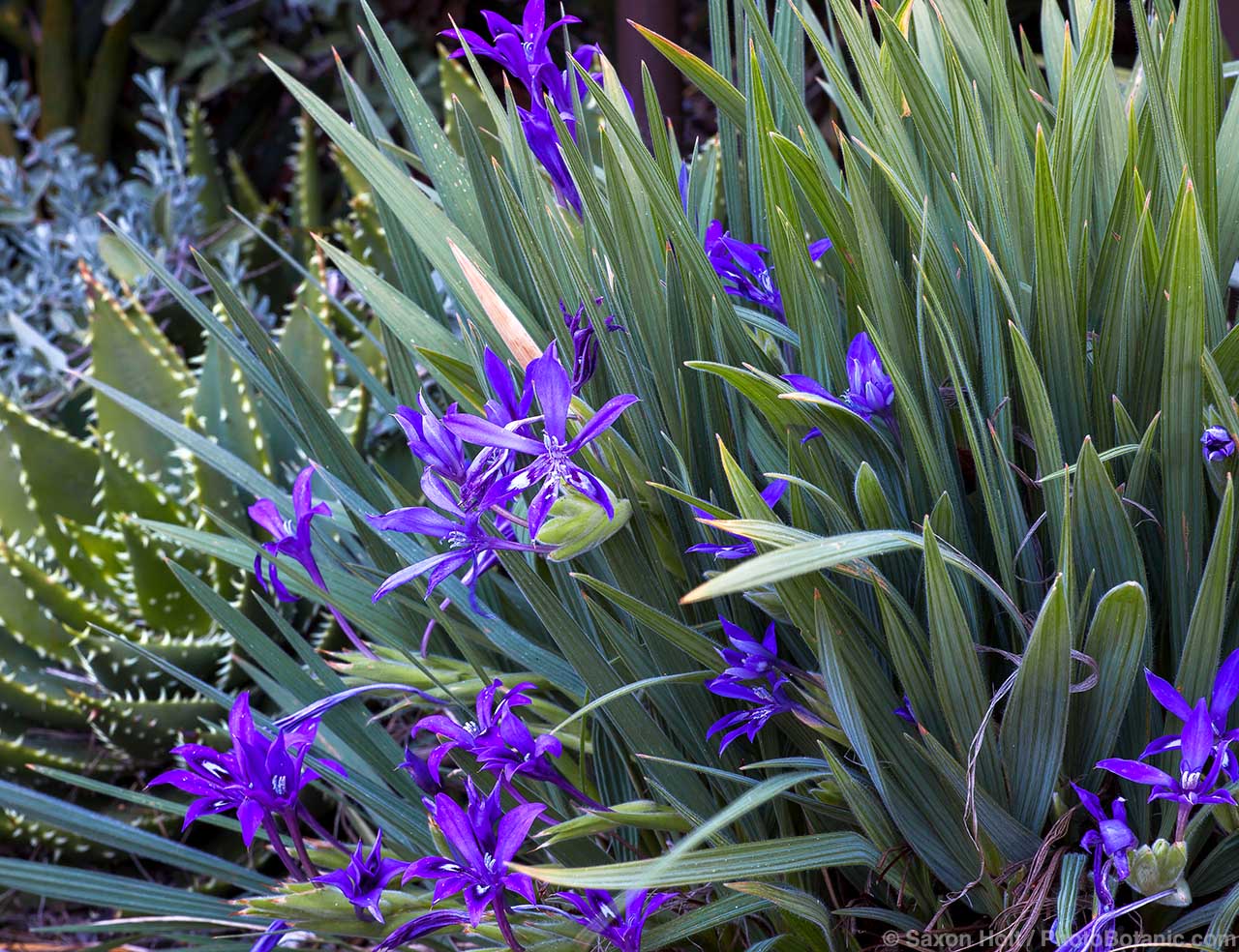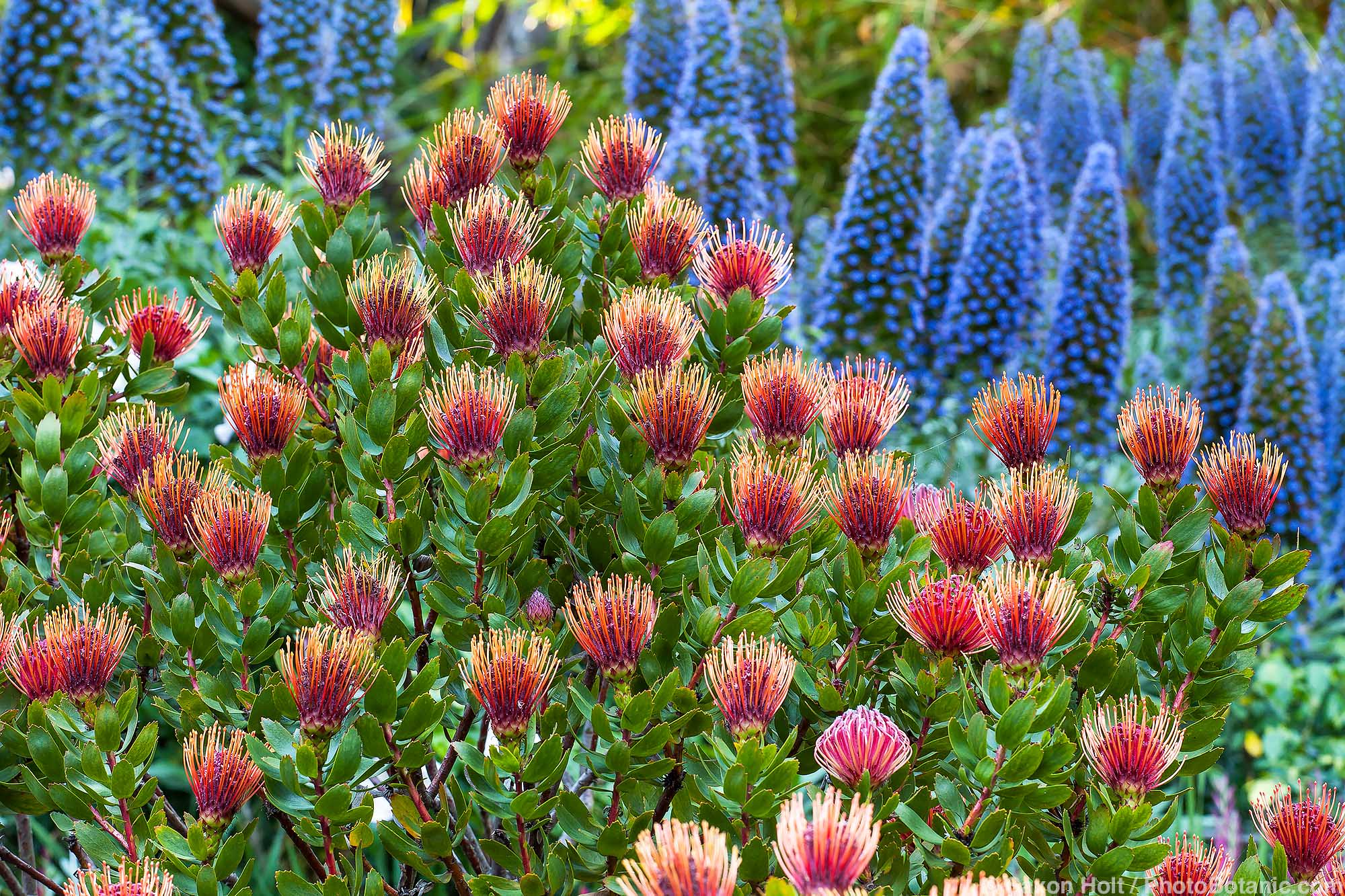Sisyrinchiums
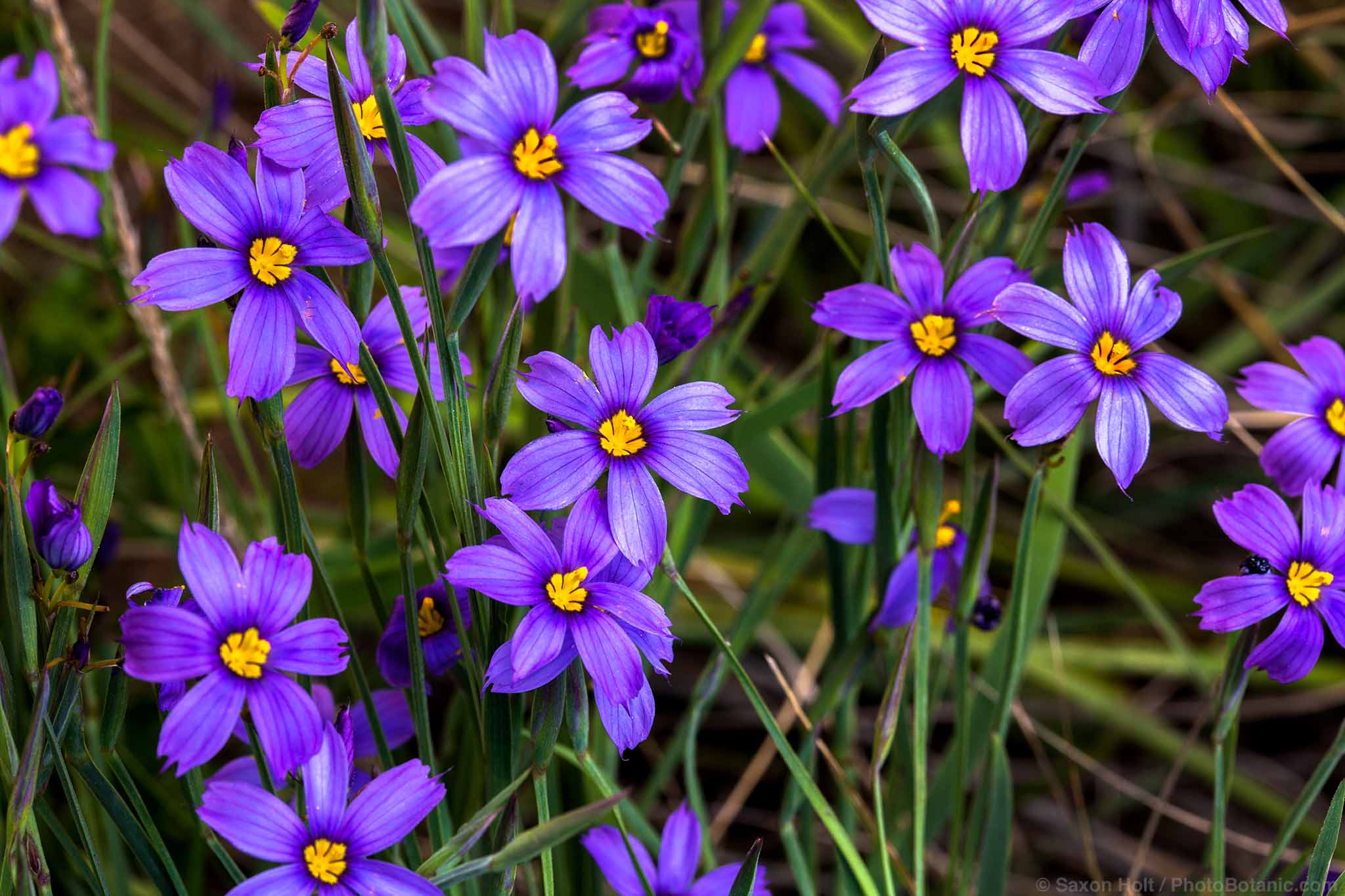
Share This!
Tough little plants with a delicate appearance, sisyrinchiums are ideal for naturalizing in the garden. Members of the iris family, along with freesias, crocuses, and irises themselves, sisyrinchiums spread by rhizomes and by seed, cheerfully expanding their chosen territory, mingling with but usually not disturbing their larger neighbors.
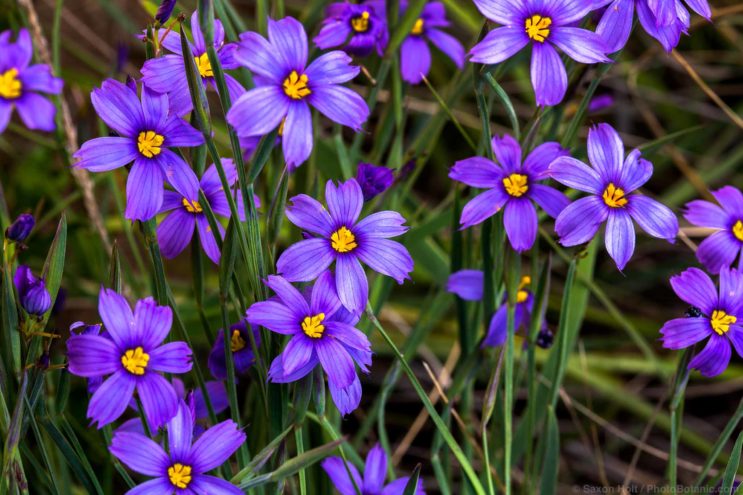
Flowers of Sisyrinchium bellum (western blue-eyed grass)
Sisyrinchiums are easily recognized by their six-petaled, blue to bluish purple, yellow, or sometimes white flowers with bright yellow centers. Their linear to narrowly sword-shaped, green to bluish or grayish green leaves are basal, mostly upright, and overlapping at the base as is typical of the iris family.
All sisyrinchiums are native to North, Central, or South America, some ranging widely across vast areas, others more localized. Many species are quite variable, and many are at least superficially similar to other species, differing only in the finer details of leaf and flower. Most are commonly known as some form of blue-eyed or yellow-eyed grass.
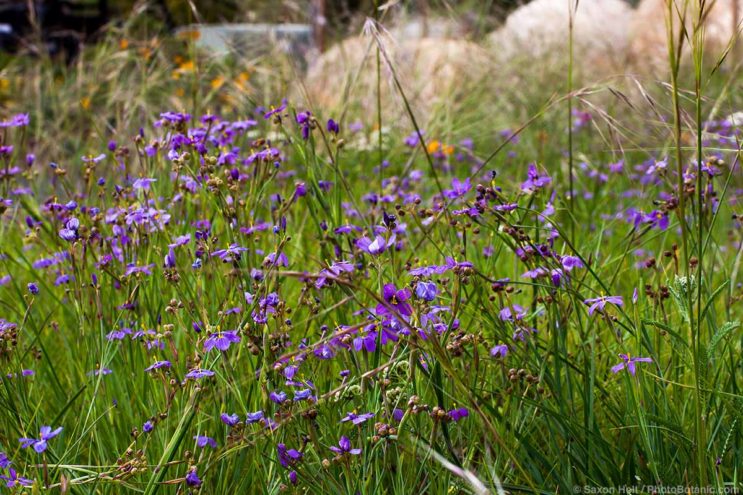
Sisyrinchium bellum blends naturally into a grassy meadow garden.
Sisyrinchium bellum, western blue-eyed grass, is native to vernally moist, sunny meadows, shrublands, and open woodlands from southwestern Oregon to northwestern Baja California. Plants are dormant in summer if grown dry, reviving with cooler weather and fall rains.
Sisyrinchium bellum is highly variable, with plants ranging from less than six to eighteen inches tall. The early to late spring flowers are pale to deep blue, bluish purple, lavender, or rarely white. Natural variability has given rise to many cultivars. ‘Arroyo de la Cruz’ bears some of the largest dark purple flowers on plants up to 12 inches tall. ‘Rocky Point’ is 4-6 inches tall with short, broad leaves and large, dark purple flowers. ‘H Bar H White’ is about a foot tall with pure white flowers. Some cultivars do not self-sow.
Many other sisyrinchiums are available from specialty nurseries or online seed suppliers, but some are less suited to the winter-wet, summer-dry garden. Sisyrinchium californicum, with golden yellow flowers, is native to damp or even marshy sites along the coast from southwestern British Columbia through northern California. S. idahoense, with purplish blue flowers, is native to moist meadows and damp, open woodlands in much of western North America.
S. montanum and S. angustifolium, both with blue or blue-purple flowers, are widespread in North America. The former is native to the mountains of southern Canada and the northern United States, the latter to much of the eastern half of the continent.
Share This!
Related Articles
By: Nora Harlow
By: Nora Harlow
By: Nora Harlow




